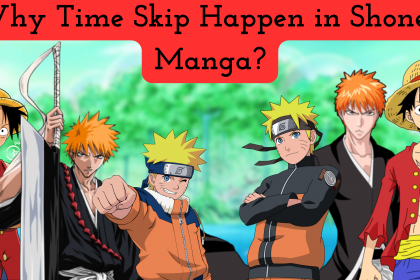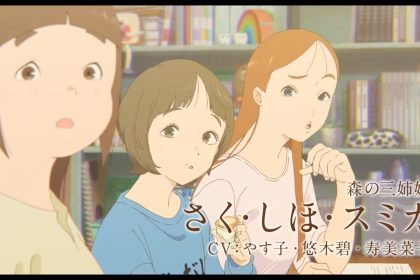Dive into the world of shonen anime, and you’re in for a rollercoaster ride of emotions, action, and yes, violence. But have you ever stopped to ponder the Effects of Violence in Shonen Anime? Is it just a tool for thrill and shock value, or does it hold a deeper significance in the narrative tapestry of anime?
Understanding the Nature of Violence in Shonen Anime
Defining Violence in the Context of Anime
Types of Violence
From brutal physical confrontations to psychological warfare, violence in shonen anime comes in many shades. It’s not just about the blood and gore; it’s about the tension, the conflict, and the stakes that keep us on the edge of our seats.
Depiction and Representation
The way violence is portrayed can make all the difference. It’s a dance between the shadows and the light, a play of subtlety and extravagance. The artistry lies in how it’s woven into the fabric of the story, leaving an imprint on the viewer’s mind.
Notable Examples of Violent Shonen Anime
Attack on Titan
In a world where humanity is on the brink of extinction, violence is a constant companion. The visceral battles between humans and Titans are a testament to the survival of the fittest, a brutal reminder of the fragility of life.
Tokyo Ghoul
The dark and twisted world of Tokyo Ghoul brings us face to face with the horrors of the supernatural. The clash between ghouls and humans is a dance of death, a symphony of suffering and survival.
Parasyte
When alien parasites invade the human world, the line between predator and prey blurs. The battles are a reflection of the primal instincts of survival, a glimpse into the darkness within.
Analyzing the Effects of Violence in Shonen Anime
Impact on Viewers
Psychological Responses
The vivid portrayal of violence in shonen anime can evoke a myriad of psychological responses. It’s a rollercoaster of fear, excitement, and empathy. But how does this visual spectacle shape our perceptions and attitudes towards violence in the real world?
Desensitization to Violence
Repeated exposure to animated aggression can lead to desensitization. It’s like building a tolerance, where the shock value diminishes, and the threshold for violent content escalates. But does this desensitization translate to a diminished sensitivity to real-world violence?
Narrative and Thematic Significance
Conflict and Resolution
Violence is often the heartbeat of conflict and resolution in shonen anime. It’s the catalyst for character development, the driving force behind plot progression. But is it merely a narrative convenience, or does it hold a mirror to the complexities of human nature?
Moral and Ethical Dilemmas
The portrayal of violence often brings moral and ethical dilemmas to the forefront. It’s a gray area, where right and wrong blur, and characters grapple with the consequences of their actions. It’s a reflection of the eternal struggle between light and darkness within the human soul.
The Debate Surrounding Violence in Shonen Anime
Public Reception and Criticism
Controversies and Backlash
The graphic nature of violence in shonen anime has sparked controversies and backlash. Critics argue about the potential harm and the ethical implications of exposing young audiences to such content. But where do we draw the line between creative freedom and social responsibility?
Defense and Justification
On the flip side, proponents of violent shonen anime defend its artistic and thematic relevance. They argue that it’s a medium of expression, a reflection of societal issues, and a platform for exploring the human condition. But can artistic intent justify the graphic portrayal of violence?
Censorship and Regulation
Changes in Broadcast Standards
Over the years, broadcast standards have evolved, shaping the way violence is depicted in anime. It’s a balancing act between artistic integrity and societal norms. But how have these changes impacted the creative landscape of shonen anime?
Influence of Cultural Norms
Cultural norms and values play a pivotal role in shaping the perception and acceptance of violence in anime. It’s a dialogue between tradition and modernity, a reflection of societal attitudes towards aggression and conflict. But how does this cultural context influence the portrayal of violence in shonen anime?
Conclusion
As we conclude this exploration, it’s evident that the Effects of Violence in Shonen Anime are multifaceted and complex. Violence is not just a narrative tool; it’s a thematic element that reflects the intricacies of human nature and society. While debates surrounding its impact and portrayal continue, the enduring popularity of violent shonen anime attests to its ability to captivate audiences and provoke thought.
FAQs
Q1: Why is violence a prevalent theme in shonen anime?
Violence is a prevalent theme in shonen anime as it serves as a key driver for conflict, character development, and plot progression. It also allows for the exploration of moral and ethical dilemmas, adding depth to the narrative.
Q2: How does the portrayal of violence in anime affect its viewers?
The portrayal of violence in anime can evoke various psychological responses, potentially leading to desensitization to violent content. However, it also offers viewers a platform to explore and reflect on themes of conflict, morality, and human nature.
Q3: Are there regulations in place to control the level of violence in anime?
Yes, there are broadcast standards and regulations in place to control the level of violence in anime, balancing artistic integrity with societal norms and values.
Q4: What are some other notable shonen anime known for their violent content?
Besides Attack on Titan, Tokyo Ghoul, and Parasyte, other notable shonen anime known for violent content include Berserk, Elfen Lied, and Hellsing.
Q5: Is the violence in shonen anime justified by narrative needs?
The justification of violence in shonen anime is subjective and depends on its execution and thematic integration. When used effectively, it can enhance the narrative and contribute to character development and thematic depth.













